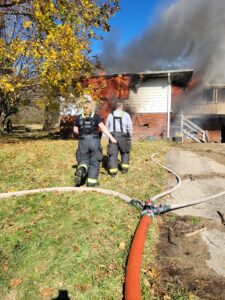
Emergency Dial 9-1-1

Emergency Dial 9-1-1
Home » Carbon Monoxide Safety
Carbon dioxide (CO₂) is a naturally occurring gas that is essential for life on Earth. While it plays a vital role in respiration and the environment, high levels of CO₂ can be dangerous, especially in enclosed spaces. Understanding the risks and safety precautions can help prevent health hazards caused by excessive carbon dioxide exposure.
Carbon dioxide is a colorless, odorless gas made up of one carbon atom and two oxygen atoms (CO₂). It is produced by:
CO₂ is often confused with carbon monoxide (CO), but they are different gases:
While CO₂ is harmless at normal levels, high concentrations can cause oxygen displacement, leading to serious health effects:
Enclosed spaces with poor ventilation, such as basements, industrial sites, breweries, and greenhouses, can accumulate high CO₂ levels, posing a suffocation risk.
While carbon dioxide is an essential part of our environment, too much can be dangerous. By ensuring proper ventilation, monitoring levels, and following safety precautions, you can prevent CO₂-related hazards and stay safe.
For more safety tips, visit your local health department or the Occupational Safety and Health Administration (OSHA) at www.osha.gov. 🚨💨
